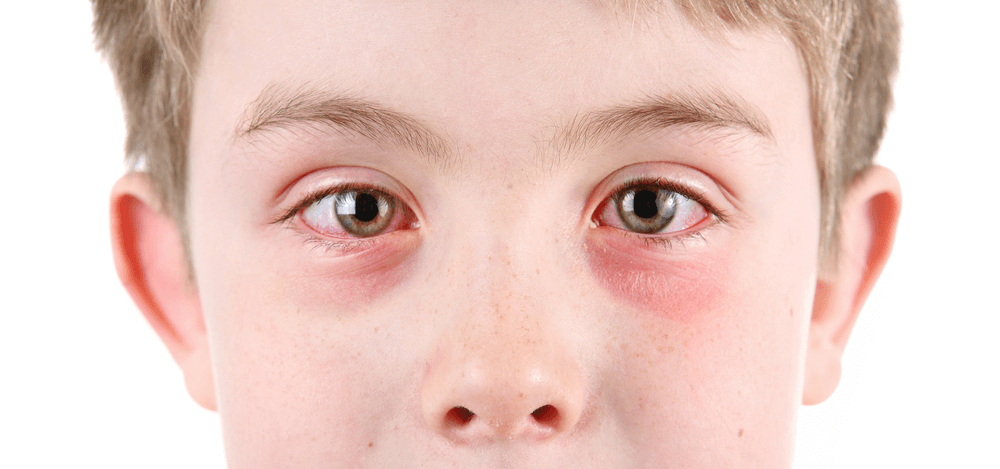Pink Eye (Conjunctivitis): Causes, Symptoms & Treatment
Pink eye, also known as conjunctivitis, develops when the blood vessels in the transparent membrane, or conjunctiva, that line the eyelid and the white part of the eyeball get inflamed. The inflammation causes blood vessels to become more visible and gives the whites of the eyes a distinct pink or red tint, which is where the condition gets its name.
Causes
Pink eye is one of the most common ailments to affect both children and adults, according to the National Eye Institute (NEI). There are four main factors that can cause pink eye: an allergic reaction, a foreign substance in the eye, a viral infection or a bacterial infection.
When it is caused by a bacterial or viral infection, pink eye can be very contagious.
“It is spread when a person touches his or her own eye and then touches the eye of another person; or it is spread to the individual by touching the infection in one’s own nose or sinus,” said Dr. Jill Swartz, practicing physician at GoHealth Urgent Care.
Viral conjunctivitis is the most common form of pink eye and it is most commonly caused by a cold virus, according to the American Academy of Ophthalmology. It can also be caused by the herpes simplex virus.
Bacterial conjunctivitis is caused by a bacterial infection of the eye. This bacteria is sometimes the same that causes strep throat.
On the other hand, allergic and foreign-substance-caused conjunctivitis aren’t contagious. Allergic conjunctivitis is caused by allergens such as pollen, pet dander, dust mites or mold. On the other hand, irritant-caused pink eye can result from a foreign object in the eye, contact with chemicals, fumes, cosmetics or from wearing contact lenses for too long or without cleaning them properly.
Newborns can also get a form of pink eye known as “neonatal conjunctivitis,” from an infection, irritation or blocked tear duct, according to the NEI.
Symptoms
Symptoms can occur in one or both eyes, according to the Mayo Clinic.
Pink eye is usually very easy to detect. When the membrane becomes inflamed, it produces mucus and tears to protect the eye.
“It usually starts in a single eye with goopy, thick crusted discharge — you wake up and the eye feels sealed like glue,” said Cindy Weston, an assistant professor at the Texas A&M Health Science Center College of Nursing.
The other most obvious symptom is reddened whites of the eye. Inflammation or swelling from pink eye makes blood vessels more visible, causing the redness.
Pink eye can also cause itchy and watery eyes, a grainy feeling in the eye, swelling of the eyelids, cloudy vision, a burning sensation and light sensitivity. Sometimes the lymph node in front of the ear can enlarge or become tender or contact lenses may not stay in place or feel uncomfortable because of bumps that may form under the eyelids, according to the NEI.
The symptoms can vary depending on the cause. Viral conjunctivitis usually comes on quickly and can be associated with “cold” pink-eye-symptoms like runny nose, cough, sore throat, fever, congestion, said Weston.
Bacterial conjunctivitis is often marked by thick, yellow-green discharge and can also exhibit cold-like symptoms. It can also sometimes accompany an ear infection, according to the NEI.
Allergic conjunctivitis usually affects both eyes. The eyes will often feel watery, itchy and scratchy. The discharge is clear and may be accompanied by other allergy symptoms including itchy nose, sneezing and clear nasal drainage.
Treatment
Pink eye can often be treated at home, according to the NEI. But you should see a doctor if you have moderate to severe pain in the eye, vision problems that don’t improve when the discharge is wiped from the eyes and extreme redness in the eyes. If you have a weakened immune system or think you have viral pink eye and the symptoms worsen or don’t get any better with time, it’s also important to see a doctor, according to the NEI.
Newborns with symptoms of conjunctivitis should see a healthcare provider right away, according to the CDC.
Virus conjunctivitis infections are typically mild and will resolve on its own within a week or two, according to the NEI. Mild bacteria-caused pink eye most often also resolves on its own, but antibiotic ointments or eye drops can hasten the process.
For allergic and irritant-caused pink eye, the inflammation will go away on its own once the allergen or irritant is eliminated or greatly reduced.
There are several at-home treatments that can provide some relief. Swartz suggested that it’s best to wipe away the discharge with a warm cloth several times a day.
A cold compress can also be used to sooth allergic conjunctivitis and a warm compress can be used to sooth viral or bacterial pink eye. Eye drops may also help alleviate dryness and help with swelling. Allergic conjunctivitis can be treated with an over-the-counter antihistamine.
Contact lens wearers with pink eye should stop wearing their contact lenses until their eyes heal. They should also throw away any used contacts.
Pink eye is usually contagious until the tearing, discharge and matting of the eyes goes away. This can last up to two weeks.
Prevention
Pink eye can be highly contagious, especially in children, so it is important to take steps to prevent infection. Dr. John Soud, owner and co-founder of Velocity Care Urgent Treatment Centers, provided these tips for preventing the spread of pink eye:
Never touch your eyes or the area around your eyes without washing your hands first.
Be sure to discard old cosmetics and anything that comes in contact with your eyes during an infection.
Never share makeup products.
Weston added that surfaces should be wiped down with disinfectant, and towels should be laundered after use to help prevent the spread of infection.






